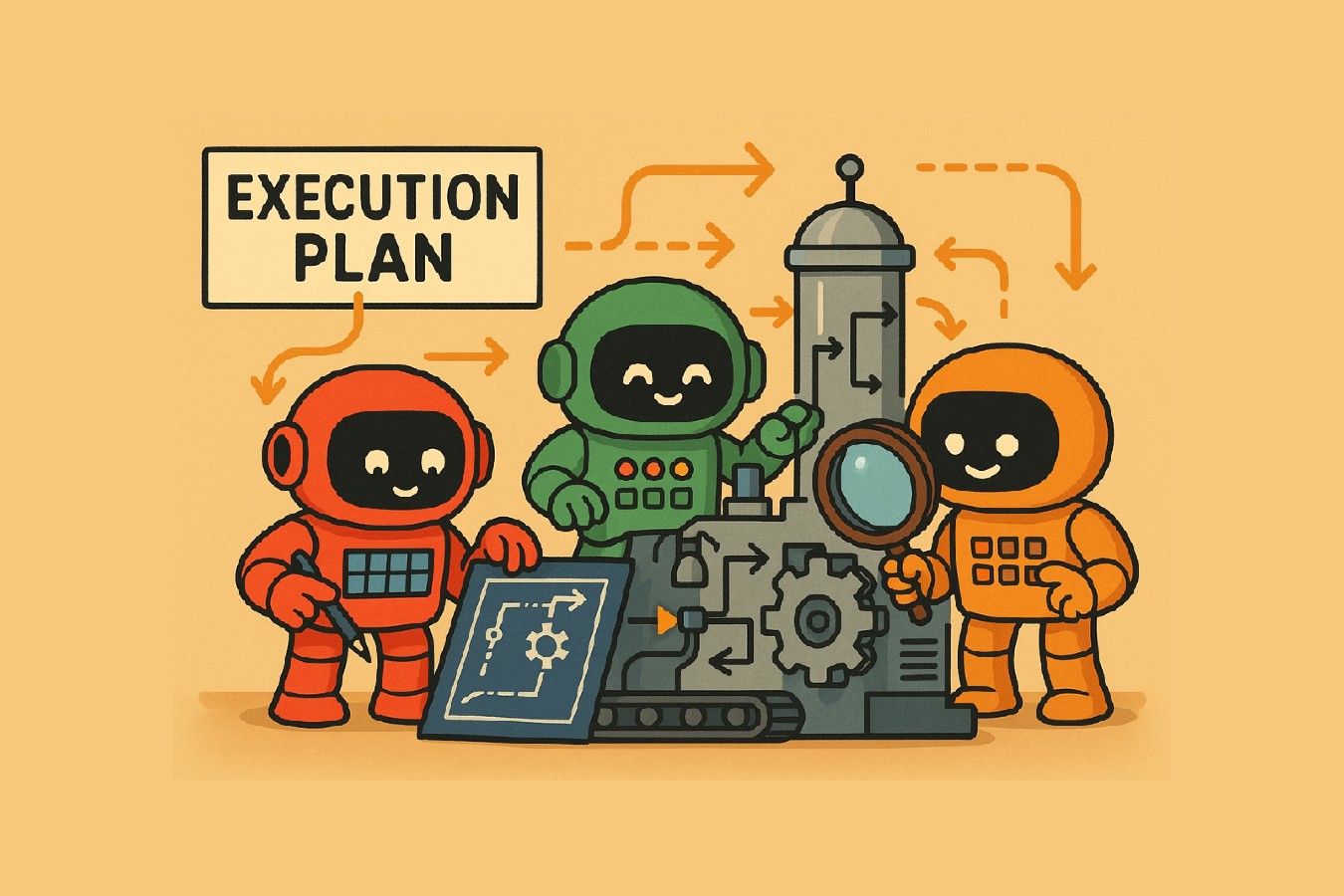Execution Plans with FairMind: Implementation Plans for AI Agents
TL;DR
We've introduced Execution Plans in FairMind: implementation plans generated by agents for other agents. The result? More accurate code, less technical debt, native IDE integration, and a specs-driven development flow that minimizes the typical variance of LLMs.
Why "vibe coding" alone isn't enough
Vibe coding is exciting: it makes non-technical people productive and accelerates those who already develop. But on real projects, structural limitations emerge:
- Context management on large or continuously evolving codebases
- Intrinsic non-determinism in token-by-token generation of LLMs
- Continuous prompting overhead, with variable and hard-to-maintain results
In short: without structure, initial gains evaporate when the project grows.
Our thesis: agent best practices and Specs-Driven Development
As in traditional software development, best practices are needed here too. The most important one is Specs-Driven Development (SDD): define needs, user stories and granular tasks first, and make them guardrails for agents.
With SDD we reduce the probabilistic component of generation: agents don't "guess", they execute.
The novelty: Execution Plans (plans that one agent writes for another)
Execution Plans are machine-oriented technical documents that:
1. Derive from requirements (need → user story → task)
Execution Plans automatically transform business requirements into detailed technical specifications, eliminating interpretive ambiguity. Each user story is broken down into atomic tasks with precise instructions on APIs, validations and interfaces, maintaining complete traceability.
2. Analyze the existing codebase to find dependencies and impacts
The system scans the current architecture identifying patterns, conventions and critical integration points before generating instructions. This preventive analysis maps cross-module dependencies and impacts, reducing merge conflicts and regressions.
3. Dictate the "how": tech stack, modules, controllers, APIs, UI, DB schema, migrations, tests, observability
The Execution Plan specifies exactly which technology to use for each layer while respecting existing standards. It includes complete blueprints for migrations, tests, logging and monitoring, ensuring production-ready features.
4. Break down work into steps executable by specialized agents
Each plan is segmented into micro-tasks assignable to specialized AI agents with atomic and verifiable instructions. Granularity allows parallelization and selective rollback with objective success criteria.
Concrete Enterprise Effects
Much higher code accuracy
Machine-readable specifications eliminate subjective interpretations, generating code compliant with requirements and standards. Fewer bugs in production and shorter review cycles accelerate delivery.
Reduced technical debt (less post-hoc refactoring)
Preventive analysis ensures coherent integration with existing code, respecting established patterns. It minimizes architectural inconsistencies that require expensive subsequent refactoring.
Faster time-to-market with context-consistent output
Automatic generation eliminates manual analysis times, accelerating planning. Output consistent with the ecosystem reduces feedback cycles and corrective iterations.
Alignment with IDE and existing review workflows
Generate code compatible with team IDEs and integrate with existing Git workflows. Maintains established code review and CI/CD processes, facilitating adoption without disruption.
How it works in FairMind
Architect Playground (in FairMind Studio), guided by our Atlas agent:
- Receives one or more user stories to include in the plan
- Scans the codebase and the rest of the project for consistency and impacts
- Generates a detailed Implementation / Execution Plan
- Exposes it to the IDE via MCP server, so your tools (Cursor, Replit, Copilot, etc.) use it in-place
An example of (reduced) Execution Plan structure
## Implementation Plan
### Technical Specifications
- **Framework**: React 18 with TypeScript
- **State Management**: Zustand
- **API Integration**: REST with axios
- **Testing**: Jest + React Testing Library
### Database Changes
- Migration: Add `user_preferences` table
- Schema: Add `notification_settings` column
### Implementation Steps
1. **Backend API** (Agent: Backend Specialist)
- Create `/api/preferences` endpoint
- Add validation middleware
- Write unit tests
2. **Frontend Components** (Agent: Frontend Specialist)
- UserPreferences component
- Settings modal integration
- State management setup
3. **Integration Tests** (Agent: QA Specialist)
- End-to-end user flow
- API contract validation
From narrative to practice: the role of AI Babysitter
Realism first: agents enhance development but need supervision (AI Babysitting). With an Execution Plan:
- Supervision becomes verification against specifications, not creative micromanagement
- The diff between "expected" and "produced" is inspectable and measurable
- Prompting simplifies: fewer prompts, more progress
Operational best practices we recommend
- Start from requirements: need → user story → granular tasks
- Generate the plan with Atlas and have it validated by the team (Design/BE/FE/QA)
- Bind agents to the plan (policy: "no code out of scope")
- Integrated quality metrics: auto-generated tests, coverage, contract tests
- Observability by design (metrics, logs, tracing in the plan)
- Plan update cadence at every evolutionary layer
- Diff-based review: every PR maps to one or more plan steps
Recurring question: why not "just ChatGPT + very long prompt"?
- Persistent and organized context: project, requirements and plans live in FairMind, not scattered across chats
- IDE integration via MCP: no copy-paste, fewer transcription errors
- Contractual clarity: an executable document by different agents, not an ad-hoc prompt
- Variance reduction: systematic guardrails → repeatable results
What you get in the enterprise
- Reliability: code that respects enterprise specifications and constraints
- Sustainable velocity: scaling delivery without exploding technical debt
- Cross-team alignment: a single source of truth, from PM to QA
- Smooth adoption: work from your IDE, with the tools you already use
Conclusion
The future of AI-assisted development is not a magic prompt: it's executable planning. With Execution Plans and Specs-Driven Development, FairMind takes agents from "generating code" to delivering software—coherent, measurable and production-ready.
Want to see Execution Plans in action in your codebase? Tell us about your user stories: we'll help you transform them into an executable plan for your agents. 🚀
Stay at the Forefront.
Subscribe to FairMind's newsletter for exclusive insights on AI-powered development, agent workflows and real-world MCP use cases—once a month in your inbox.
✨ No noise, only signal. → Subscribe now
#AI #SoftwareDevelopment #Enterprise #CodeGeneration #DevOps #TechInnovation #SoftwareEngineering #AgileManagement #DigitalTransformation
Ready to Transform Your Enterprise Software Development?
Join the organizations using FairMind to revolutionize how they build, maintain, and evolve software.
